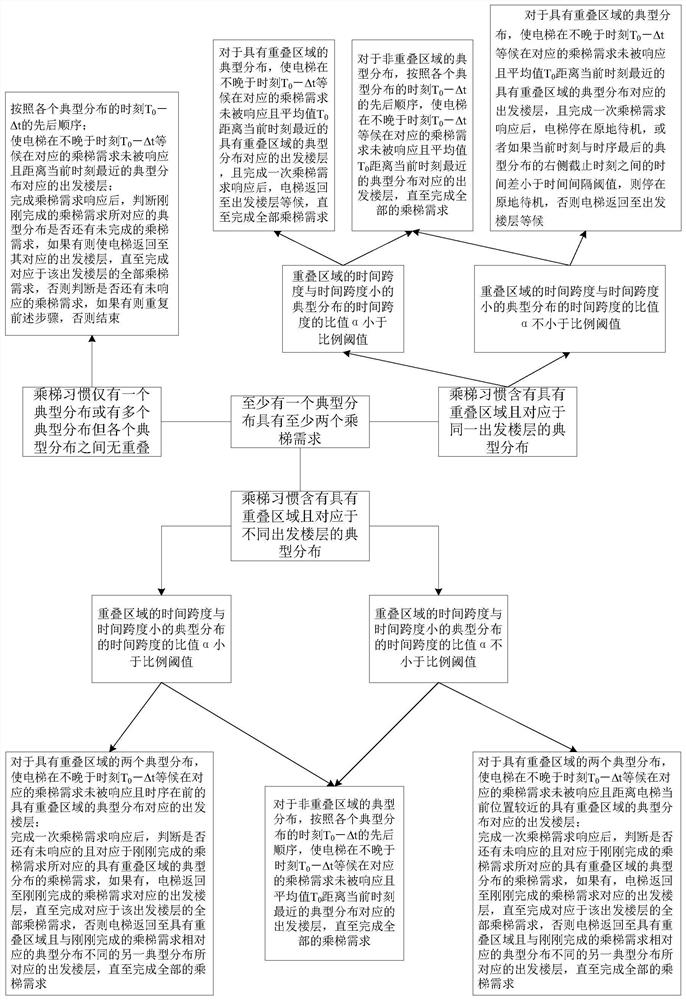Elevator control method for predicting passenger ride demand for single elevator
A demand and elevator technology, which is applied in the field of elevator control, can solve problems such as failure to analyze passengers in depth and failure of elevator ride demand, and achieve the effect of improving the ride experience, avoiding invalid waiting, and eliminating waiting time
- Summary
- Abstract
- Description
- Claims
- Application Information
AI Technical Summary
Problems solved by technology
Method used
Image
Examples
Embodiment 1
[0092] In this embodiment, the elevator control method for predicting the passenger demand for a single elevator is used, wherein:
[0093] Utilize a learning unit to learn the passenger's elevator habits and output to a policy determination unit, the learning unit learns according to the historical elevator operation data related to the passenger's trip by elevator;
[0094] Using the strategy determination unit to determine the control strategy of the elevator according to the elevator habit output by the learning unit;
[0095] A control unit is used to control the elevators of the elevator group according to the control strategy output by the strategy determination unit.
[0096] The elevator-riding habit is a general term for the laws of periodically repeated passenger elevator-riding behaviors, wherein one elevator-riding habit refers to a group of passenger elevator-riding behavior laws that have the same periodic repetition. Regularity means that the ride time of the ...
Embodiment 2
[0156] The principle of this embodiment is similar to that of Embodiment 1, the difference is that this embodiment is mainly aimed at at least one typical distribution having at least two ride demands (for example, there are usually at least two a regular demand for elevators). The control strategy determined by the strategy determination unit is as follows: figure 2 As shown, the specific description is as follows:
[0157] (1) When the habit of taking an elevator has only one typical distribution or there are multiple typical distributions but there is no overlap between the typical distributions (no overlap means that the time distance between two adjacent typical distributions is sufficient to ensure that the elevator completes a running cycle) When , the control strategy determined by the strategy determination unit is:
[0158] Step 1, according to the time T of each typical distribution 0 -Sequential order of Δt;
[0159] Step 2, make the elevator no later than tim...
PUM
 Login to View More
Login to View More Abstract
Description
Claims
Application Information
 Login to View More
Login to View More - R&D
- Intellectual Property
- Life Sciences
- Materials
- Tech Scout
- Unparalleled Data Quality
- Higher Quality Content
- 60% Fewer Hallucinations
Browse by: Latest US Patents, China's latest patents, Technical Efficacy Thesaurus, Application Domain, Technology Topic, Popular Technical Reports.
© 2025 PatSnap. All rights reserved.Legal|Privacy policy|Modern Slavery Act Transparency Statement|Sitemap|About US| Contact US: help@patsnap.com


